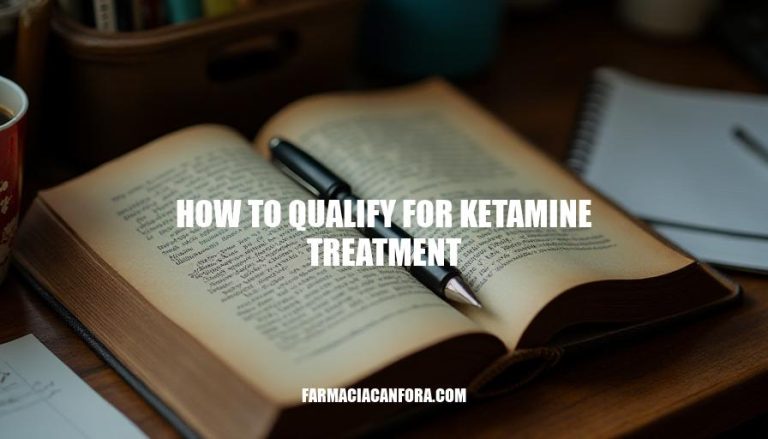


Ketamine treatment is emerging as a promising option for individuals with treatment-resistant conditions, such as depression, chronic pain, and PTSD. To qualify, patients typically need to have tried multiple standard treatments without success. Understanding the eligibility criteria is crucial, as it ensures that the treatment is both safe and potentially effective for the patient. The benefits of ketamine therapy can include rapid relief of symptoms and improved quality of life for those who have not found relief through other means.
Ketamine treatment involves using low doses of ketamine, a dissociative anesthetic, to manage mental health conditions like treatment-resistant depression, anxiety disorders, and PTSD. Originally approved as an anesthetic, ketamine has shown rapid and significant antidepressant effects.
Ketamine works by modulating glutamate, a key neurotransmitter, which helps form new neural connections and repair damaged cells. This process can improve mood, function, and sleep. It’s particularly considered for patients who haven’t responded to other treatments because it can provide relief when traditional medications and therapies have failed.
To qualify for ketamine treatment, the following criteria are typically required:
Age Requirements:
Diagnosis of Treatment-Resistant Conditions:
Previous Treatment History:
The medical assessment process for qualifying for ketamine treatment involves several key steps:
These steps help determine if ketamine therapy is a suitable and safe option for the patient.
Consulting with specialists is crucial for qualifying for ketamine treatment due to the following reasons:
Accurate Diagnosis: Psychiatrists and mental health professionals can accurately diagnose conditions like treatment-resistant depression, which is essential for determining eligibility for ketamine treatment.
Personalized Treatment Plans: Specialists tailor treatment plans to individual needs, considering medical history, current medications, and specific mental health conditions.
Monitoring and Safety: Continuous monitoring by professionals ensures the safe administration of ketamine, managing potential side effects and adjusting dosages as needed.
Integrated Care: Collaboration between psychiatrists, therapists, and other healthcare providers ensures comprehensive care, addressing both the psychological and physiological aspects of treatment.
Informed Decision-Making: Specialists provide detailed information about the benefits, risks, and expected outcomes of ketamine treatment, helping patients make informed decisions.
Insurance coverage for ketamine treatment varies widely. While some insurance plans may cover FDA-approved esketamine (Spravato) for treatment-resistant depression, coverage for off-label ketamine infusions is less common. It’s crucial to check with your insurance provider to understand your specific plan’s coverage.
The cost of ketamine infusions can range from $400 to $800 per session, with a full course of treatment often requiring multiple sessions. Many clinics offer payment plans to help manage these expenses.
Some clinics may provide financing options or accept Health Savings Accounts (HSAs) and Flexible Spending Accounts (FSAs) to cover treatment costs. Additionally, organizations like The Ketamine Task Force are working to increase insurance coverage and make treatments more accessible.
To qualify for ketamine treatment, patients typically need to meet specific eligibility criteria, including being 18 years or older and having a diagnosis of treatment-resistant conditions such as depression, bipolar disorder, PTSD, or acute suicidality.
They must also have a documented history of failure to respond to standard treatments and have tried at least two different treatment modalities without success. A comprehensive evaluation by healthcare professionals is necessary to determine eligibility, including a thorough review of the patient’s mental health history, current symptoms, and treatment goals.
Consulting with specialists is crucial for accurate diagnosis, personalized treatment plans, monitoring and safety, integrated care, and informed decision-making. Insurance coverage varies widely, and patients should check with their insurance provider to understand their specific plan’s coverage.
The cost of ketamine infusions can range from $400 to $800 per session, and some clinics may offer financing options or accept Health Savings Accounts (HSAs) and Flexible Spending Accounts (FSAs).
Patients should follow pre-treatment instructions, including scheduling appointments in advance, avoiding certain substances and foods, and getting a good night’s sleep.
During treatment, patients should focus on relaxation and go with the flow as dissociation sets in.
After treatment, they should rest, stay hydrated, and follow up with their medical team.